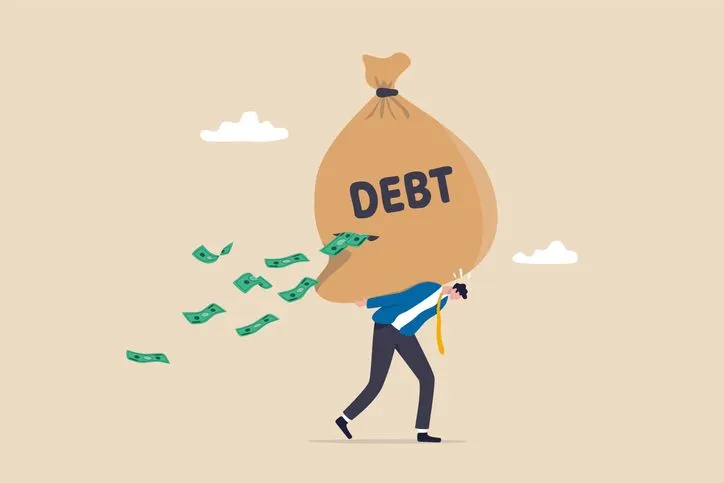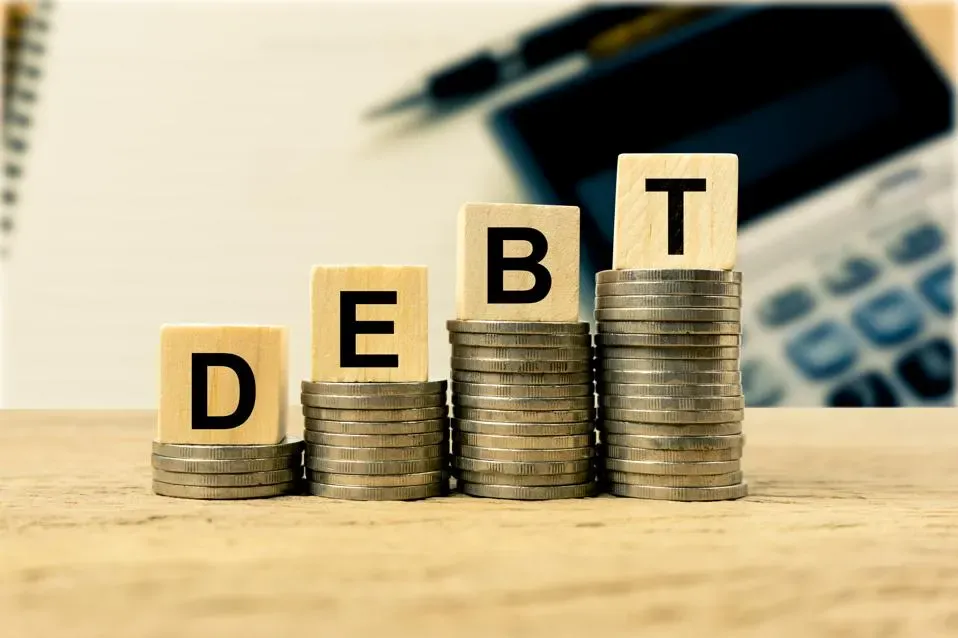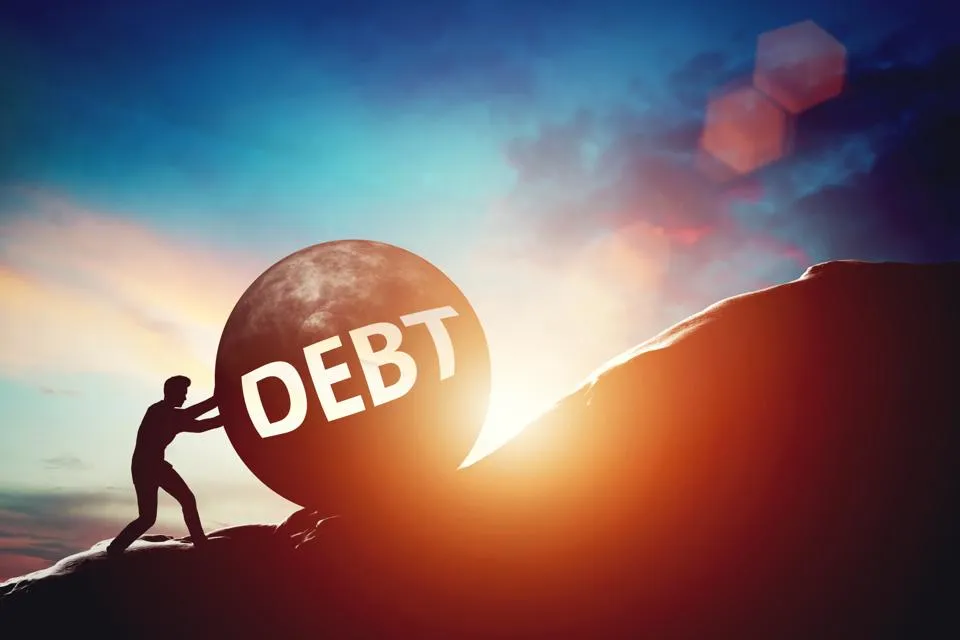Which Debts To Pay Off First
Learn which debts to prioritize for maximum financial impact. Discover proven strategies to tackle high-interest debt, boost your credit score, and achieve debt freedom faster.
If you're staring at multiple bills wondering which debt deserves your attention first, you're not alone. The average American carries debt across several accounts - credit cards, student loans, car payments, and more. But here's the thing: not all debts are created equal.
Choosing the right debt to tackle first can save you thousands in interest, boost your credit score faster, and give you the momentum you need to become debt-free. The key lies in understanding how different types of debt affect your finances and credit profile.
In this guide, I'll walk you through the most effective strategies to prioritize your debts, whether you're focused on saving money, improving your credit score, or just need that psychological win to keep going. Let's turn that overwhelming pile of bills into a clear, actionable plan.
Table of Contents
- Understanding Your Debt Landscape
- Past-Due Accounts: Your First Priority
- High-Interest Debt vs. Low-Interest Debt
- Credit Cards vs. Installment Loans
- The Debt Avalanche Strategy
- The Debt Snowball Method
- Credit Score Impact Strategy
- Debt Consolidation Options
- Creating Your Personalized Action Plan
Understanding Your Debt Landscape
Before diving into strategies, you need to map out exactly what you're dealing with. Think of this as your financial X-ray - you can't treat what you can't see clearly.
Start by listing every single debt you have. Include credit cards, personal loans, student loans, car payments, mortgages, medical bills, and yes, even that money you borrowed from your brother-in-law. For each debt, note the outstanding balance, interest rate, minimum monthly payment, and current status.
This might feel overwhelming at first, but knowledge is power. Many people avoid looking at their total debt picture, which only makes the problem worse. Once you have everything laid out, you can make informed decisions about where to focus your efforts.
The Four Key Factors to Consider:
Your debt prioritization should be based on four main factors: the type of debt, interest rate, outstanding balance, and impact on your credit score. Some debts are more "expensive" than others, not just in terms of interest rates, but in their potential to damage your financial future.
For example, a past-due credit card with a $500 balance might deserve more attention than a current student loan with a $5,000 balance, even though the student loan is larger. Why? Because the past-due account is actively damaging your credit score every month it remains delinquent.

Past-Due Accounts: Your First Priority
If you have any accounts that are behind on payments, stop everything and focus here first. Past-due accounts are financial emergencies that require immediate attention, regardless of balance size or interest rate.
Why Past-Due Accounts Come First:
Late payments can stay on your credit report for up to seven years, and the damage compounds the longer you wait. A single 30-day late payment can drop your credit score by 60-110 points, depending on your starting score. Multiple late payments or accounts in collections can devastate your credit for years.
Moreover, if you have secured debt like a mortgage or car loan that's past due, you're risking foreclosure or repossession. The consequences extend far beyond your credit score - you could literally lose your home or transportation.
Getting Back on Track:
Contact your creditors immediately if you're behind on payments. Many lenders offer hardship programs or payment plans that can help you catch up without further damaging your credit. Don't ignore the problem hoping it will go away - it won't.
As Your Money or Your Life: 9 Steps to Transforming Your Relationship with Money and Achieving Financial Independence emphasizes, facing your financial reality head-on is the first step toward lasting change.
High-Interest Debt vs. Low-Interest Debt
Once you've addressed any delinquent accounts, the next major consideration is interest rates. This is where mathematics meets psychology, and both matter for your success.
Understanding Interest Rate Impact:
High-interest debt, typically credit cards with rates between 18-30%, can quickly spiral out of control. If you're paying only the minimum on a $5,000 credit card balance at 22% APR, you'll pay over $6,000 in interest alone and take more than 30 years to pay it off.
Compare that to a student loan at 6% interest or a mortgage at 4%. While these balances might be larger, they're growing much more slowly. This is why financial experts often recommend tackling high-interest debt aggressively while maintaining minimum payments on lower-rate obligations.
The 10% Rule:
A good rule of thumb is to prioritize any debt with an interest rate above 10%. This typically includes credit cards, personal loans, and some auto loans. Anything below 10% can often wait, especially if you're also investing for retirement or building an emergency fund.
However, don't let this rule override common sense. If you have a small high-interest debt and a manageable low-interest debt that's causing you stress, sometimes the psychological benefit of eliminating the stressful debt first is worth the slight mathematical disadvantage.
Credit Cards vs. Installment Loans
Understanding the difference between revolving debt (credit cards) and installment debt (loans) is crucial for both your repayment strategy and credit score optimization.
Revolving Debt (Credit Cards):
Credit cards offer flexibility but at a cost. The revolving nature means you can borrow up to your limit repeatedly, but this also means the debt can easily grow if you're not careful. More importantly for your credit score, credit cards contribute to your credit utilization ratio - the percentage of available credit you're using.
High credit utilization (above 30% of your limit) can significantly hurt your credit score. This is why paying down credit card balances often provides the biggest credit score boost for your dollar.
Installment Debt (Loans):
Installment loans include mortgages, auto loans, student loans, and personal loans. These typically have fixed payments and predetermined end dates. While paying off installment loans can help your credit score, the impact is usually less dramatic than paying down credit card debt.
The exception is when you're close to paying off an installment loan entirely. Having fewer accounts with balances can positively impact your credit score, so sometimes it makes sense to finish off a small remaining balance even if it's not your highest-interest debt.

The Debt Avalanche Strategy
The debt avalanche method is the mathematically optimal approach to debt repayment. You focus extra payments on the debt with the highest interest rate while maintaining minimum payments on everything else.
How It Works:
List all your debts by interest rate, from highest to lowest. Put every extra dollar toward the highest-rate debt until it's gone, then move to the next highest rate. This method minimizes the total interest you'll pay over time.
Example in Action:
Let's say you have three debts:
- Credit card: $3,000 at 24% APR
- Personal loan: $8,000 at 12% APR
- Car loan: $15,000 at 6% APR
With the avalanche method, you'd attack the credit card first, regardless of its smaller balance, because that 24% interest rate is costing you the most money.
Pros and Cons:
The avalanche method saves you the most money in interest payments and gets you debt-free fastest from a purely mathematical standpoint. However, it requires patience and discipline, especially if your highest-interest debt also has the largest balance.
This method works best for people who are motivated by numbers and long-term savings rather than quick psychological wins. If you're the type of person who gets energized by spreadsheets and optimization, the avalanche method is probably perfect for you.
As explained in Morgan Housel's "The Psychology of Money" Book, financial decisions aren't just about math - they're about behavior and psychology too.
The Debt Snowball Method
The debt snowball method prioritizes psychological momentum over mathematical optimization. You pay off your smallest balances first, regardless of interest rate, to build confidence and motivation.
The Psychology Behind It:
Every time you completely eliminate a debt, you get a psychological boost. This "win" releases dopamine and reinforces the behavior, making you more likely to stick with your debt repayment plan. For many people, this psychological benefit outweighs the mathematical disadvantage.
How to Implement:
List your debts from smallest to largest balance. Attack the smallest debt with everything you've got while maintaining minimums on the rest. Once it's gone, take that payment amount and add it to your next smallest debt payment.
When Snowball Makes Sense:
The snowball method is particularly effective if you have multiple small debts that are causing you stress and overwhelm. It's also great for people who have struggled with debt repayment in the past and need to build confidence in their ability to succeed.
Consider this method if you have several debts under $1,000, or if you're someone who gets motivated by checking items off a to-do list. The key is that you actually stick with the plan - a "suboptimal" plan that you follow is infinitely better than a "perfect" plan that you abandon.
Credit Score Impact Strategy
Sometimes the best debt to pay off first isn't the highest interest or smallest balance - it's the one that will boost your credit score the most. This approach makes sense if you're planning a major purchase like a home in the near future.
Credit Utilization is King:
Your credit utilization ratio accounts for 30% of your FICO credit score. This is the percentage of available credit you're using across all your revolving accounts (primarily credit cards).
The magic numbers to remember: keep individual cards below 30% utilization, and ideally below 10% for the best scores. If you have a credit card that's maxed out or close to its limit, paying this down can provide an immediate and significant credit score boost.
Strategic Credit Card Paydown:
If you have multiple credit cards with balances, consider which one to pay down first based on utilization rates rather than just balances or interest rates. A card with a $1,000 balance and $2,000 limit (50% utilization) might deserve attention before a card with a $2,000 balance and $10,000 limit (20% utilization).
The One-Card Strategy:
Some credit experts recommend paying off all but one credit card completely, then focusing on keeping that remaining card below 10% utilization. This can maximize your credit score impact while simplifying your monthly payments.

Debt Consolidation Options
Sometimes the best strategy isn't choosing which debt to pay first, but combining multiple debts into a single, more manageable payment. Debt consolidation can simplify your finances and potentially save you money.
Balance Transfer Credit Cards:
If you have good credit, a balance transfer card with a 0% introductory APR can give you a breather from interest charges. You can transfer high-interest credit card debt to the new card and have 12-21 months to pay it down interest-free.
The catch? You'll pay a balance transfer fee (usually 3-5% of the transferred amount), and if you don't pay off the balance before the promotional rate expires, you'll face the card's regular APR, which can be just as high as what you started with.
Debt Consolidation Loans:
A personal loan can be used to pay off multiple debts, leaving you with a single monthly payment at a potentially lower interest rate. This works best if you can qualify for a rate that's significantly lower than your current debt.
The key advantage is predictability - you'll have a fixed payment and a definite payoff date. However, you need good credit to qualify for the best rates, and you must resist the temptation to run up new debt on the cards you just paid off.
Home Equity Options:
If you're a homeowner with equity, a home equity loan or line of credit might offer very low interest rates for debt consolidation. However, you're putting your home at risk as collateral, so this option requires careful consideration.
As discussed in The Intelligent Investor - Benjamin Graham, using leverage (borrowing against assets) can amplify both gains and losses, so proceed with caution.
Creating Your Personalized Action Plan
Now that you understand the different strategies, it's time to create your personalized debt elimination plan. The best strategy is the one you'll actually follow through on.
Step 1: Assessment and Organization
Gather all your debt information in one place. Create a spreadsheet or use a debt tracking app to list every debt with its balance, interest rate, minimum payment, and due date. Calculate your total debt - yes, it might be scary, but you need to know where you stand.
Step 2: Choose Your Primary Strategy
Based on your personality and situation, choose your main approach:
- Avalanche method if you're motivated by saving money and can handle delayed gratification
- Snowball method if you need psychological wins to stay motivated
- Credit score strategy if you're planning a major purchase soon
- Hybrid approach combining elements of multiple strategies
Step 3: Automate Your Success
Set up automatic payments for at least the minimum amount on all debts to avoid late fees and credit damage. Then set up automatic transfers to your debt elimination fund so you're not relying on willpower alone.
Step 4: Track and Adjust
Review your progress monthly. Celebrate victories - even small ones - and adjust your strategy if needed. If you get a bonus, tax refund, or other windfall, put at least half of it toward debt elimination.
Additional Tactics for Acceleration:
Consider these strategies to speed up your debt payoff:
- Negotiate lower interest rates with your current creditors
- Take on a side hustle and put all earnings toward debt
- Sell items you no longer need
- Use cash windfalls (tax refunds, bonuses) for debt elimination
- Cut expenses temporarily to free up more money for debt payments

The Long-Term Perspective:
Remember, becoming debt-free is not just about the money - it's about freedom. Every payment brings you closer to having more choices in your life. You'll sleep better, stress less, and have more opportunities to build wealth once you're not sending hundreds or thousands of dollars in interest payments every month.
The strategies outlined in books like Rich Dad Poor Dad emphasize that eliminating high-interest debt is one of the most important steps toward building lasting wealth.
Final Thoughts:
The "right" debt to pay off first depends on your unique situation, goals, and personality. What matters most is that you start somewhere and stay consistent. Whether you choose the mathematical optimization of the avalanche method or the psychological momentum of the snowball method, the key is taking action and sticking with your plan.
Don't let perfect be the enemy of good. A debt elimination strategy that you follow for six months is infinitely better than a perfect strategy that you abandon after six weeks. Choose the approach that feels sustainable for you, and remember that you can always adjust your strategy as your situation changes.
The journey to debt freedom isn't always easy, but it's always worth it. Every payment you make is an investment in your future financial security and peace of mind. Start where you are, use what you have, and do what you can. Your future self will thank you for taking action today.
For more insights on building wealth and financial security, check out our guide on ways to get out of debt a complete step-by-step and learn about emergency fund how much to save where to invest to prevent future debt accumulation.

